给寻找编程代码教程的朋友们精选了相关的编程文章,网友潘新觉根据主题投稿了本篇教程内容,涉及到SpringBoot启动、SpringBoot初始化、SpringBoot初始化执行sql、SpringBoot启动并初始化执行sql脚本相关内容,已被833网友关注,涉猎到的知识点内容可以在下方电子书获得。
SpringBoot启动并初始化执行sql脚本
SpringBoot启动并初始化执行sql脚本
如果我们想在项目启动的时候去执行一些sql脚本该怎么办呢,SpringBoot给我们提供了这个功能,可以在启动SpringBoot的项目时,执行脚本,下面我们来看一下。
我们先看一下源码
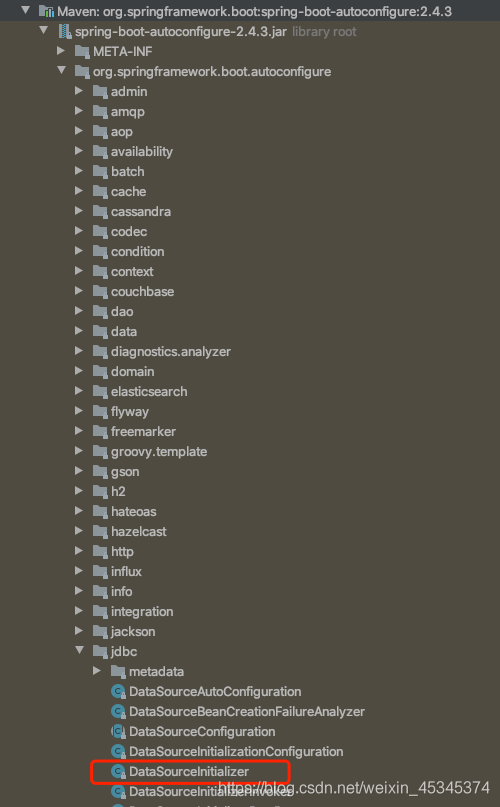
boolean createSchema() {
//会从application.properties或application.yml中获取sql脚本列表
List<Resource> scripts = this.getScripts("spring.datasource.schema", this.properties.getSchema(), "schema");
if (!scripts.isEmpty()) {
if (!this.isEnabled()) {
logger.debug("Initialization disabled (not running DDL scripts)");
return false;
}
String username = this.properties.getSchemaUsername();
String password = this.properties.getSchemaPassword();
//运行sql脚本
this.runScripts(scripts, username, password);
}
return !scripts.isEmpty();
}
private List<Resource> getScripts(String propertyName, List<String> resources, String fallback) {
if (resources != null) {
//如果配置文件中配置,则加载配置文件
return this.getResources(propertyName, resources, true);
} else {
//指定schema要使用的Platform(mysql、oracle),默认为all
String platform = this.properties.getPlatform();
List<String> fallbackResources = new ArrayList();
//如果配置文件中没配置,则会去类路径下找名称为schema或schema-platform的文件
fallbackResources.add("classpath*:" + fallback + "-" + platform + ".sql");
fallbackResources.add("classpath*:" + fallback + ".sql");
return this.getResources(propertyName, fallbackResources, false);
}
}
private List<Resource> getResources(String propertyName, List<String> locations, boolean validate) {
List<Resource> resources = new ArrayList();
Iterator var5 = locations.iterator();
while(var5.hasNext()) {
String location = (String)var5.next();
Resource[] var7 = this.doGetResources(location);
int var8 = var7.length;
for(int var9 = 0; var9 < var8; ++var9) {
Resource resource = var7[var9];
//验证文件是否存在
if (resource.exists()) {
resources.add(resource);
} else if (validate) {
throw new InvalidConfigurationPropertyValueException(propertyName, resource, "The specified resource does not exist.");
}
}
}
return resources;
}
从源码观察,大致知道是什么意思了,SpringBoot默认会从类路径下去找脚本文件,但是类路径下只能放规定名称为schema或schema-platform的脚本文件,如果我们想要分好多个脚本文件,那么这种方式就不合适了,那么就需要我们在application.properties或application.yml中去配置脚本列表,那么这个初始化脚本操作能不能在配置文件中控制呢,可以的,有一个initialization-mode属性,可以设置三个值,always为始终执行初始化,embedded只初始化内存数据库(默认值),如h2等,never为不执行初始化。
spring:
datasource:
username: root
password: liuzhenyu199577
url: jdbc:mysql://localhost:3306/jdbc
driver-class-name: com.mysql.cj.jdbc.Driver
initialization-mode: always
下面我们验证一下这两种方式
1.默认放置schema或schema-platform的脚本文件
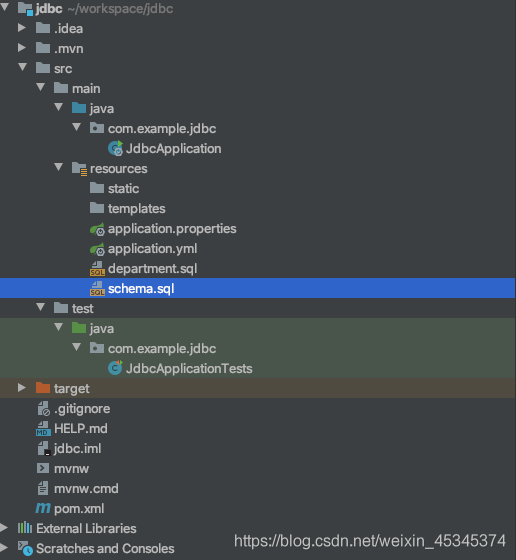
CREATE TABLE IF NOT EXISTS department (ID VARCHAR(40) NOT NULL, NAME VARCHAR(100), PRIMARY KEY (ID));
查看数据库没有department这个表,接下来我们启动程序
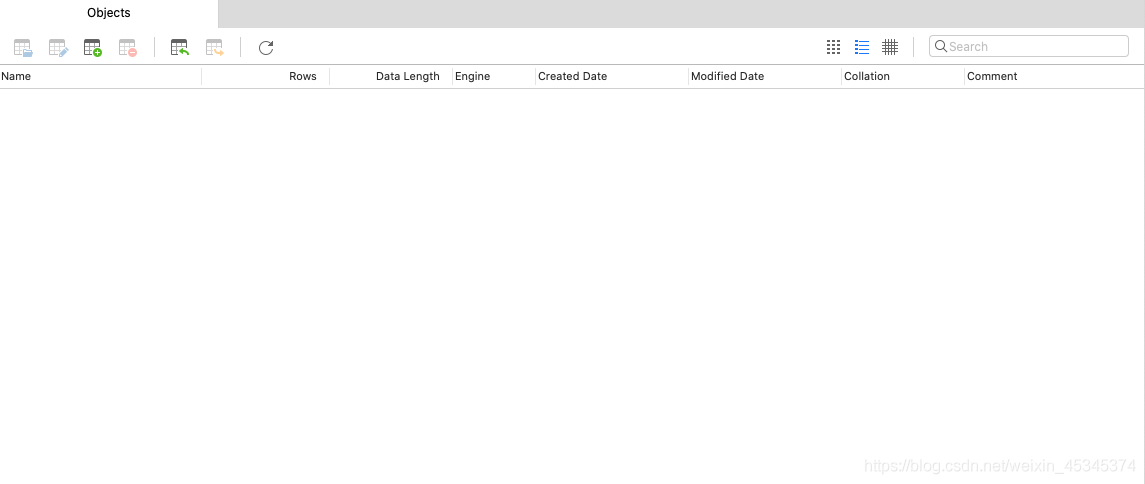
启动之后,我们再看一下,就执行了
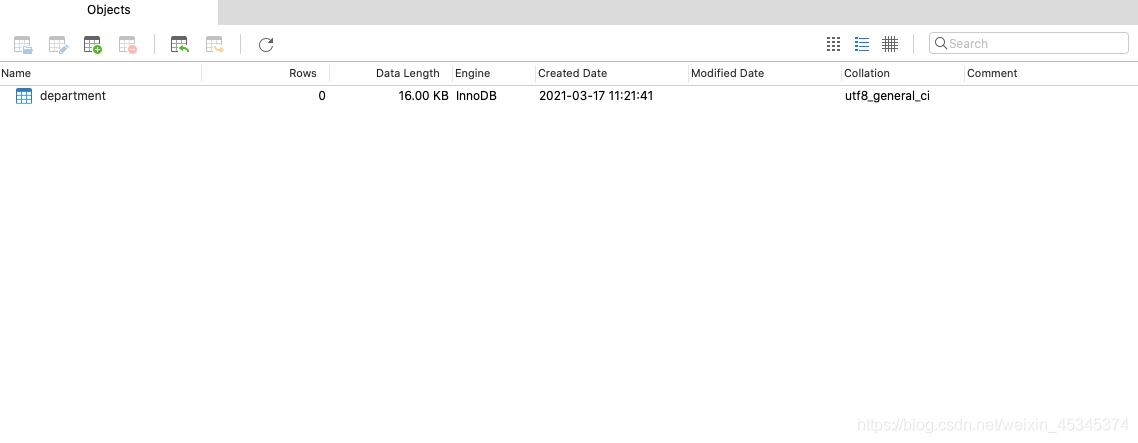
2.配置文件中指定多个sql脚本
spring:
datasource:
username: root
password: liuzhenyu199577
url: jdbc:mysql://localhost:3306/jdbc
driver-class-name: com.mysql.cj.jdbc.Driver
initialization-mode: always
schema:
- classpath:department.sql
- classpath:department2.sql
- classpath:department3.sql
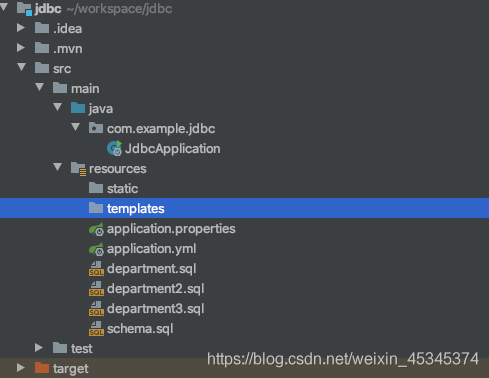
三个sql脚本都是插入语句
INSERT INTO department (ID,NAME) VALUES ('1','2')
INSERT INTO department (ID,NAME) VALUES ('2','3')
INSERT INTO department (ID,NAME) VALUES ('3','4')
现在表中无任何数据,接下来我们启动程序
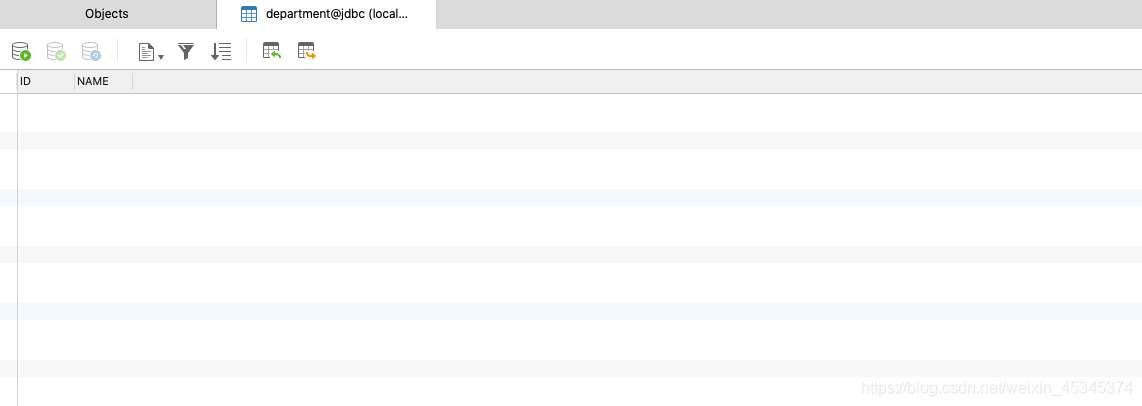
启动之后,我们再看一下,表中就有了三条数据
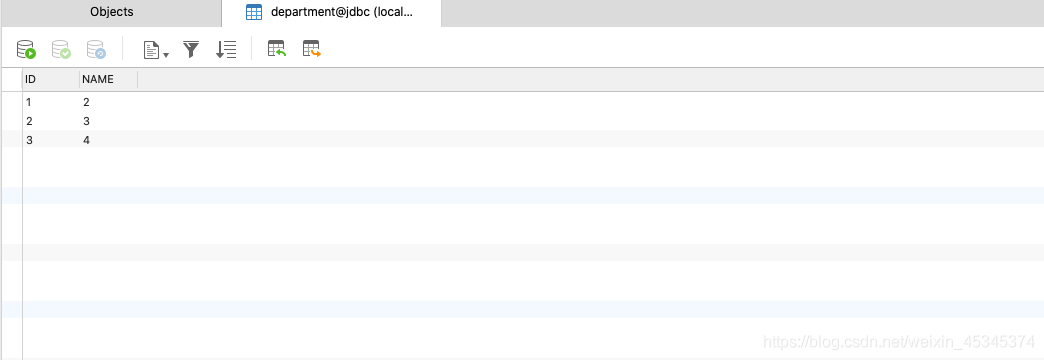
就是SpringBoot启动并初始化sql脚本的步骤
SpringBoot项目在启动时执行指定sql文件
1. 启动时执行
当有在项目启动时先执行指定的sql语句的需求时,可以在resources文件夹下添加需要执行的sql文件,文件中的sql语句可以是DDL脚本或DML脚本,然后在配置加入相应的配置即可,如下:
spring: datasource: schema: classpath:schema.sql # schema.sql中一般存放的是DDL脚本,即通常为创建或更新库表的脚本 data: classpath:data.sql # data.sql中一般是DML脚本,即通常为数据插入脚本
2. 执行多个sql文件
spring.datasource.schema和spring.datasource.data都是支持接收一个列表,所以当需要执行多个sql文件时,可以使用如下配置:
spring: datasource: schema: classpath:schema_1.sql, classpath:schema_2.sql data: classpath:data_1.sql, classpath:data_2.sql 或 spring: datasource: schema: - classpath:schema_1.sql - classpath:schema_2.sql data: - classpath:data_1.sql - classpath:data_2.sql
3. 不同运行环境执行不同脚本
一般情况下,都会有多个运行环境,比如开发、测试、生产等。而不同运行环境通常需要执行的sql会有所不同。为解决这个问题,可以使用通配符来实现。
创建不同环境的文件夹
在resources文件夹创建不同环境对应的文件夹,如dev/、sit/、prod/。
配置
application.yml
spring:
datasource:
schema: classpath:${spring.profiles.active:dev}/schema.sql
data: classpath:${spring.profiles.active:dev}/data.sql注:${}通配符支持缺省值。如上面的配置中的${spring.profiles.active:dev},其中分号前是取属性spring.profiles.active的值,而当该属性的值不存在,则使用分号后面的值,即dev。
bootstrap.yml
spring: profiles: active: dev # dev/sit/prod等。分别对应开发、测试、生产等不同运行环境。
提醒:spring.profiles.active属性一般在bootstrap.yml或bootstrap.properties中配置。
4. 支持不同数据库
因为不同数据库的语法有所差异,所以要实现同样的功能,不同数据库的sql语句可能会不一样,所以可能会有多份不同的sql文件。当需要支持不同数据库时,可以使用如下配置:
spring:
datasource:
schema: classpath:${spring.profiles.active:dev}/schema-${spring.datasource.platform}.sql
data: classpath:${spring.profiles.active:dev}/data-${spring.datasource.platform}.sql
platform: mysql提醒:platform属性的默认值是'all',所以当有在不同数据库切换的情况下才使用如上配置,因为默认值的情况下,spring boot会自动检测当前使用的数据库。
注:此时,以dev允许环境为例,resources/dev/文件夹下必须存在如下文件:schema-mysql.sql和data-mysql.sql。
5. 避坑
5.1 坑
当在执行的sql文件中存在存储过程或函数时,在启动项目时会报错。
比如现在有这样的需求:项目启动时,扫描某张表,当表记录数为0时,插入多条记录;大于0时,跳过。
schema.sql文件脚本如下:
-- 当存储过程`p1`存在时,删除。
drop procedure if exists p1;
-- 创建存储过程`p1`
create procedure p1()
begin declare row_num int; select count(*) into row_num from `t_user`; if row_num = 0 then INSERT INTO `t_user`(`username`, `password`) VALUES ('zhangsan', '123456'); end if; end; -- 调用存储过程`p1` call p1(); drop procedure if exists p1; 启动项目,报错,原因如下:
Caused by: com.mysql.jdbc.exceptions.jdbc4.MySQLSyntaxErrorException: You have an error in your SQL syntax; check the manual that corresponds to your MySQL server version for the right syntax to use near 'create procedure p1() begin declare row_num int' at line 1
大致的意思是:'create procedure p1() begin declare row_num int'这一句出现语法错误。刚看到这一句,我一开始是懵逼的,吓得我赶紧去比对mysql存储过程的写法,对了好久都发现没错,最后看到一篇讲解spring boot配置启动时执行sql脚本的文章,发现其中多了一项配置:spring.datasource.separator=$$。然后看源码发现,spring boot在解析sql脚本时,默认是以';'作为断句的分隔符的。看到这里,不难看出报错的原因,即:spring boot把'create procedure p1() begin declare row_num int'当成是一条普通的sql语句。而我们需要的是创建一个存储过程。
5.2 解决方案
修改sql脚本的断句分隔符。如:spring.datasource.separator=$$。然后把脚本改成:
-- 当存储过程`p1`存在时,删除。
drop procedure if exists p1;$$
-- 创建存储过程`p1`
create procedure p1()
begin declare row_num int; select count(*) into row_num from `t_user`; if row_num = 0 then INSERT INTO `t_user`(`username`, `password`) VALUES ('zhangsan', '123456'); end if; end;$$ -- 调用存储过程`p1` call p1();$$ drop procedure if exists p1;$$ 5.3 不足
因为sql脚本的断句分隔符从';'变成'$$',所以可能需要在DDL、DML语句的';'后加'$$',不然可能会出现将整个脚本当成一条sql语句来执行的情况。比如:
-- DDL CREATE TABLE `table_name` ( -- 字段定义 ... ) ENGINE=InnoDB DEFAULT CHARSET=utf8mb4;$$ -- DML INSERT INTO `table_name` VALUE(...);$$
总结
以上为个人经验,希望能给大家一个参考,也希望大家多多支持码农之家。









